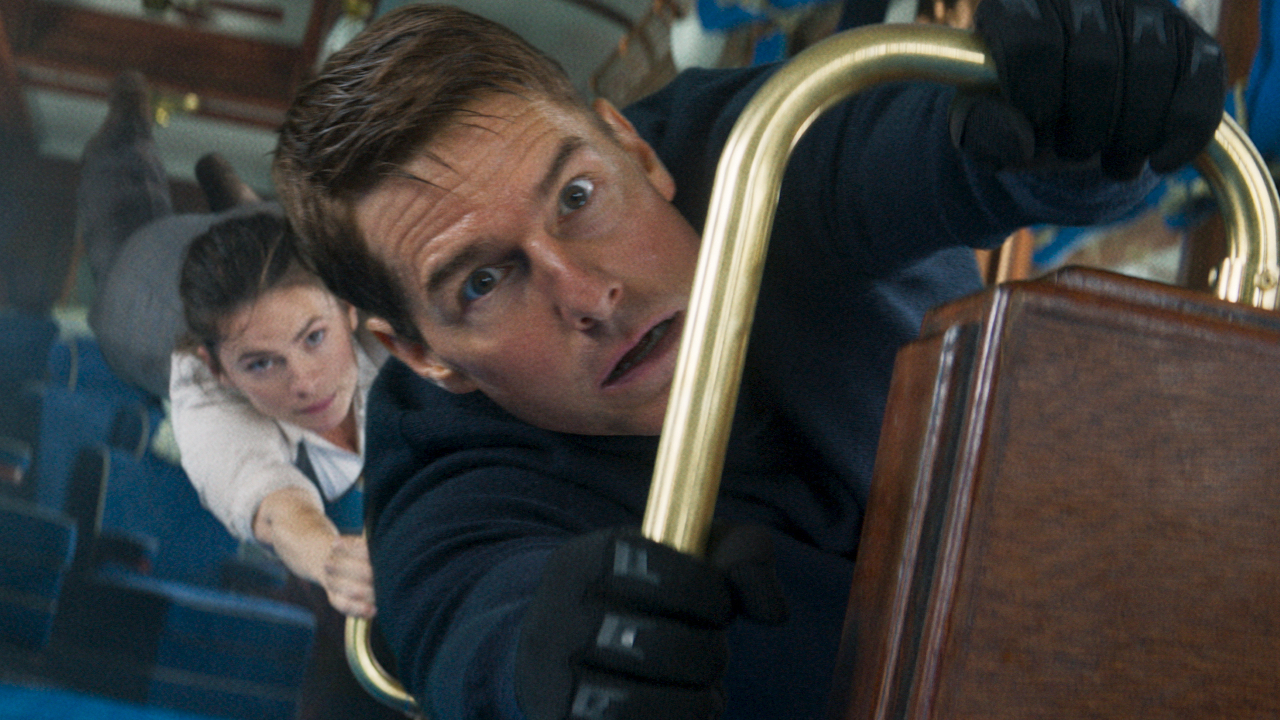Despite its widespread popularity and earnest recommendations from friends, I've never picked up Yann Martel's novel Life of Pi. To be frank, the premise of boy and tiger on a lifeboat seemed too simple to be interesting. But with Ang Lee taking on the seemingly impossible task of making this book—with its ocean setting and man-eating main character—into a 3D film, my interest was finally piqued. With crisp cinematography and a 3D-enhanced depth of field that makes the movie's world almost tangible, Lee's Life of Pi dazzles from its first frames, which display magnificent exotic animals in a way that places us beyond the protective bars and guard rails of zoo exhibits and into these creatures' territory. This is just the first hint of what's to come in this stunning 3D spectacle that's exhilarating yet tender in its storytelling, and ambitious in its scope.
Promising a story that will "make you believe in God," the film unfolds the coming-of-age story of an Indian boy called Pi Patel, who considers himself a devout Christian, Hindu and Muslim. If that confounds you, don't dwell on it, because the movie doesn't. Instead this theme of faith gets lost in its stirring tale of human spirit and the overall importance of the stories we tell ourselves to survive. And so we begin with the grown Pi (Irrfan Khan) presenting his life story to an aspiring writer (Rafe Spall) seeking inspiration. With a warm and musical tone, Khan leads us back to Pi's birth, through his childhood on the zoo his family ran, and to the sea voyage that forever changed his life.
While crossing the Pacific on their way to North America, the Patels and their menagerie of animals are caught in a ferocious storm that proves too much for the sturdy ship. Though he scrambles to find his family, Pi ends up on a lifeboat alone except for a quartet of warring animals. Before long he and a 450-pound Bengal tiger named Richard Parker are all that remain. The drama and tension that keeps the film electric comes from Pi's quest to survive not only the lack of fresh water, scarcity of food, and the unrelenting ocean with its oft-circling sharks, but also the jaws of a snarling, starving tiger. So yes, the plot is little more than paper-thin, but the tension and spectacle therein is breathtaking.
Lee's amazing effects and staging within the 3D format make Life of Pi a thoroughly immersive experience that physically pulls audiences into his sumptuous cinematic world. When Pi, thrust beneath the waves, witnesses the ship slinking into the depths below, we share in his sense of loss and loneliness as well as the unsettling sensation of floating, lost below the ocean's surface. The film is a ride, as the cameras roll with the waves and the motion tugs us with it. And the seamless blend of real tigers and their CGI stand-ins makes Richard Parker a pulse-pounding attraction, with claws and teeth lunging beyond the screen offering as close an encounter with a tiger as most people would dare. Lee raises the bar on 3D, not only offering an unparalleled and gorgeous spectacle that encompasses vibrant wonders but also unfurling a thought-provoking story given weight by the strong performances of its compelling cast.
Though their bookended scenes lack the tension and fluidity of Pi's seafaring, Khan and Spall share an easy and effervescent chemistry that makes them more welcome. Memorable turns are also offered by Tabu and Adil Hussain, who play Pi's mother and father respectively, and Ayush Tandon as the youngest Pi. But the bulk of the movie is shouldered by newcomer Suraj Sharma, who plays the protagonist throughout the lifeboat section. While the green actor sometimes lacks the subtlety Lee's actors are known for, his performance is vivid and vulnerable, and with so much of the film depending on how he interacts with a tiger—real or imagined—it's hard to think of his effort here as anything short of impressive.
Simply put, Life of Pi is glorious. A marvel that takes 3D to new heights with its crisp rendering of dreamlike landscapes and its fierce yet fascinating feline co-star, all while delivering a poignant and inspiring story of human endurance. I very rarely insist moviegoers seek out 3D screenings, but for this film if you see it in 2D you will be only seeing half of it.
Staff writer at CinemaBlend.












